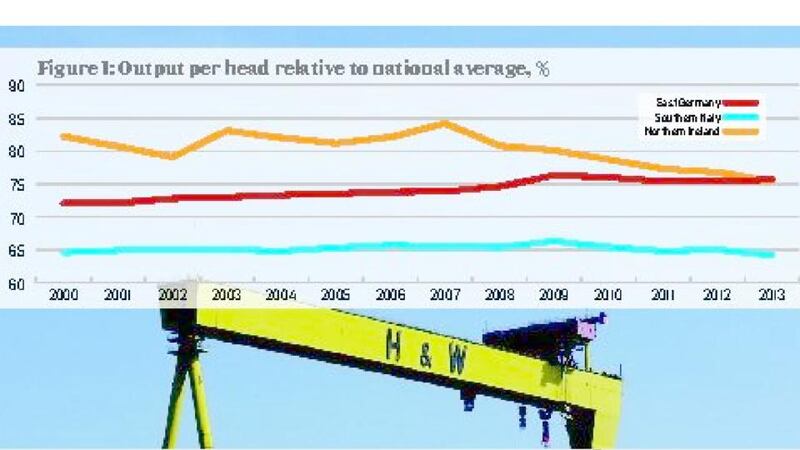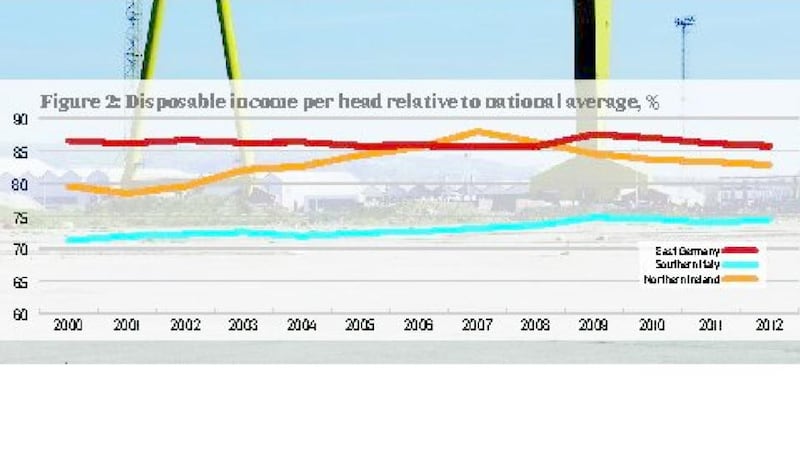Over the last decade the EU has proved successful in integrating a range of new members, all of them with a much lower standard of living than the original EU 15. For example, before membership, Poland had a standard of living of just under 50 per cent of the EU average whereas by 2013 it had reached almost 70 per cent.
A key feature of this convergence process has been that poorer economies were also cheaper places in which to do business. This attracted foreign direct investment and also helped domestic firms to adapt and expand to exploit the wider EU market.
The pattern of convergence in output per head has been more uneven within EU economies than between them. Generally, there is not a major difference in costs between poor and rich regions in EU members, which militates against convergence in output per head.


However, as a result of substantial internal transfers, there has been greater convergence in regional living standards, measured by disposable income per head. As the cost of living is significantly lower in poor regions, for example because of lower rents, the gap in real living standards between rich and poor regions is even smaller than the data would suggest.
German unification proved a notable success. As shown in Figure 1, output per head in the former East Germany, relative to the German average, has risen pretty continuously since 2000. Nonetheless, by 2013 output per head was still only 75 per cent of the national average. The major progress in raising output per head in southern Italy took place in the 1950s and the 1960s, but since then it has stalled at about 65 per cent of the national average.
Restoration of peace
Northern Ireland, having been a more successful economy than the Republic in the 1950s and early 1960s, suffered a severe economic shock from the Troubles. While one might have expected the restoration of peace, sealed in the Belfast Agreement in 1998, to have brought an economic renaissance, the outcome has been more disappointing, with output per head actually falling from more than 80 per cent of the UK average in 2000 to about 75 per cent in 2012.
Figure 2 shows the trend in disposable income per person in these three regions, relative to the national average. In the case of East Germany, on unification there were major transfers to households in the east, producing a rapid relative convergence in living standards. By 2000 disposable income per head in East Germany stabilised at just more than 85 per cent of the national average.
For southern Italy, disposable income per head rose slowly between 2000 and 2012, reaching about 75 per cent of the national average in 2012. For Northern Ireland, there was also some improvement after 2000.
The fact that living standards in poorer regions are much closer to the national average than in the case of output per head is made possible by transfers. This is normal within unitary states where there is much greater internal solidarity than between EU members.
However, a partial consequence of these transfers can be that they delay or prevent convergence in output per head. For example, the transfers may prevent major differences in regional labour costs, which might otherwise incentivise relocation of output to poorer regions.
In the case of Northern Ireland, the current standard of living is supported by a massive transfer of resources from the UK government; in recent years, the budget deficit in Northern Ireland has been about 30 per cent of GDP. This is sustainable as long as internal solidarity survives in the UK, and the UK central government accepts the burden.
However, the fact that the Northern Irish economy is even more dependent on transfers today to maintain living standards than at the time of the Belfast Agreement is a matter for concern. Devolved government, while delivering what was hoped for in the transition to peace, has not produced an economic success.
Welfare support
In the case of East Germany, the policy on unification was to close inefficient manufacturing plants and to fire many public sector workers while also providing generous welfare support. Initially, the result was a very high unemployment rate, but over the next 15 years unemployment gradually returned to more normal levels as workers found employment in new productive enterprises.
However, such a solution in Northern Ireland, involving 10 or 15 years of major pain, would be seriously destabilising and should be avoided at all costs.
A key risk for Northern Ireland is that, if the UK exits from the EU, Scotland might secede from the UK. This would leave the North an orphan region in a smaller damaged British economy. Under these circumstances, English attention would, almost inevitably, focus on the high cost of supporting living standards in Northern Ireland, possibly resulting in major cuts.
For this reason, it is vital for Northern Ireland that the UK remains in the EU. In the event of major cuts, no alternative support could be expected from the Republic as the Northern budget deficit is more than 8 per cent of Irish GDP.
In the longer term, it is important that Northern Ireland develops a better economic policy, which would reduce the region’s dependence on transfers.
While some Northern politicians view the adoption of a low corporation tax rate as a silver bullet, this is too simplistic. Looking at the relative success of East Germany’s post-unification adjustment, a wider series of economic reforms will be essential if the North is to become more self-reliant.










